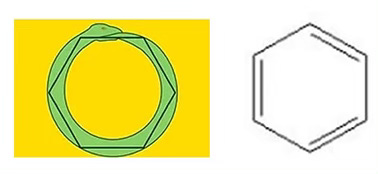Of course they are. But maybe not in the way you think. Let’s start with the easy part - something you and I will probably agree on. Scientists and artists are different species – metaphorically speaking - right?
You know the image: an aging white male with crooked teeth and messy hair; wearing a lab coat and goggles and preferably holding an effervescent test tube. OK, I am exaggerating – and as a scientist myself, I’d fail miserably by that standard. (See the foot note below). But sadly, pop culture often paints scientists as nerdy, and so introvert that being social means staring at someone else’s shoes instead of their own. Luckily, they’re happy to retreat into their labs and stay there.
Artists, in contrast, are flamboyant. They congregate in cafés and bistros — unless they’re holed up in some creative enclave, working on their next masterpiece. The more successful ones are feted by patrons and philanthropists, mingling with society’s culturally high-minded elite. Even the struggling, starving artist still carries a kind of romantic aura.
So far, so good. We agree these are two different tribes – metaphorically speaking. But now let’s look past the personalities and consider how they pursue their calling.
Artists are imaginative. They see beauty - and then reimagine it. Some use words, others melodies, color, stone, or light. What they create enriches the rest of us by expressing personal visions, emotions, and truths.
How about scientists then? Let’s consider Einstein and Planck – titans who gave us Relativity and Quantum Mechanics. Each began with a vision of how the universe might work. From that spark, and through mathematics, logic, and reason, they built models of nature — models that did not exist before. These models reflect their personal insights and creativity. And the best of them possesses elegance, simplicity, and beauty. Vision. Imagination. Creativity. Beauty. Sound familiar?
Einstein himself put it well: “New ideas are not generated by deduction, but by artistically creative imagination.” Yes, artistically creative imagination! There you have it.
Then take the German chemist Friedrich August Kekulé – who cracked the chemical structure of benzene after dreaming of Ouroboros – a mythological snake swallowing its tail. Imaginative. Creative. Beautiful.
So no — creativity and imagination aren't what separate science and art. Both are rich with them. The real difference lies in the kind of answer each one seeks. It sounds cryptic, but I mean it literally: the answer lies in the answer. Let me explain.
Scientists pursue a unifying answer – one that explains not just a single instance, but a pattern across many phenomena. The higher the agreement among other scientists, the more successful the theory. The ultimate scientific dream is a Theory of Everything — a single elegant answer that transcends all others.
Artists, by contrast, thrive on divergence. Their goal is not to match others’ expressions, but to create something uniquely personal. The more distinct their voice or vision, the better.
Let me illustrate with a simple example:
Imagine a scientist watching a crimson-red sunset. Eventually, curiosity kicks in. Why is the sky red? Why do clouds catch the light just so? The scientist seeks an answer — one that explains this scene and sunsets across time and place. And success is measured by how many other scientists agree.
Now imagine an artist in the same spot. The response might be a painting, a poem, a photograph, or a piece of music. But whatever the medium, the aim is to create something no one else could. Create something personal, singular, and authentic.
That’s the key difference. For sciences, the pinnacle of success is the single answer - as for arts it is the death knell.
And so here I am. A scientist-turned-writer, no longer seeking one perfect answer, but simply trying to tell a story uniquely mine. Everything worth saying about life may have already been said, but nobody has done so in my way…..
I write solely for the pleasure of writing. That pleasure is even greater when others enjoy reading.
If this piece resonated with you, feel free to subscribe (it’s free). I publish about once every three weeks, and you’ll get an email when something new is out.
And if you know someone else who might enjoy this kind of writing, please consider sharing it with them too.
Footnote:
If you ever thought that scientists could not be as funny, witty, entertaining, or charming as anyone else, then you should read Surely You’re Joking, Mr. Feynman! - the memoirs of Dr. Richard Feynman, Nobel Prize-winning physicist and world-class storyteller.
And if you’re surprised to see “science” and “simple” in the same sentence, just remember what Einstein is supposed to have said: “Everything should be made as simple as possible — but not simpler.” Then again, one of the most believable things Einstein never said is: “I never said half the crap that’s attributed to me.”



